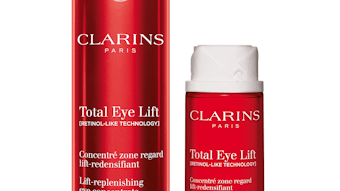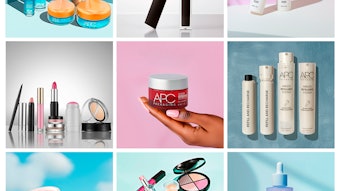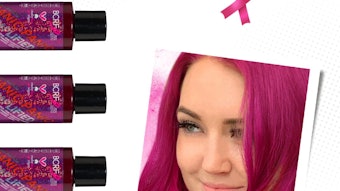Innovation is not always about delivering new products. It can be about delivering products in a new way. Additionally, as Alan Isacson, president, ABI PR, once said, “Innovation is not about packaging; it’s about giving brands the competitive edge.” Under these criteria, single-dose packaging and capsule dosage are particularly intriguing. There is much innovation going on with these packaging formats, but their ultimate success may be better judged by the trends they serve, opportunities they afford and consumers they intrigue.
In a recent GCI magazine contribution from Euromonitor International, it was noted that markets in the current climate will be defined by product innovation. Carol Gamsby, sales manager, James Alexander Corporation; and Mark Vieceli, manager, marketing and business development, Americas region, Capsugel, share what role single-dose packaging and capsule dosage formats have in brand innovation and market growth.
GCI: How does the capsule dosage form aid marketers in building more impactful brands?
Vieceli: The capsule dosage form offers an opportunity for cosmetic companies to roll out line extensions that complement their topical products. Supplements under their brand can be an addition, even a boost, to the treatment offered by their topical products.
Consumers are very aware of the ingredients in topical products and the science behind their effectiveness. The importance of antioxidants, for example, is discussed in the major media. Antioxidants are key ingredients addressing aging issues. Most consumers today recognize that aging cannot be treated with just topical applications. Nutrition and exercise are also important components of the equation. In many cases, people are not able to get what they need just from their diets; processed foods and fast-paced lifestyles throw nutrition out of balance. So many consumers, even in this economy, look to supplements to help them reach their self-established nutritional guidelines.
Cosmetic companies can take advantage of the consumers continued use and preference for supplements, along with the research coming out now that indicates certain oral cosmetics or nutracosmetics can actually help topical products work better. The oral carotenoids—lutein, astaxanthan and zeaxanthin, as examples—can be provided as powerful supplements to their topical offering.
Speaking more specifically about capsule dosage forms, cosmetic companies also can satisfy the consumers’ preference for the capsule form over tablet forms and the opportunity to provide a clean label (no preservatives, no additives) in a natural, nonanimal vegetarian form.
GCI: What is both the role and impact of capsule dosage or single-dose packaging on the growth of cosmeceuticals and sophisticated skin care regimens?
Gamsby: Single-use packaging has allowed the average consumer to purchase high-end spa treatments and special skin care products that have a shortened shelf life once exposed to oxygen.
Vieceli: Supplements in capsule form have always been a consumer-preferred means of taking herbs and other nutritional products. Our liquid in a capsule dosage form, Licaps liquid capsules, are helping fuel the growth in nutricosmetics. Astaxantin, considered the king of the carotenoids for its antioxidant activity, is a fat-soluble, unstable phytochemical. It is optimally delivered in a liquid form. With liquid encapsulation technology, astaxanthin can be more stable and more highly bioavailable than other delivery forms. It represents a type of supplement that works synergistically with topical regimens for maximum effectiveness.
An excellent example of this synergistic effectiveness was published in research on lutein and zeaxanthin in 2007 in the Journal of Skin Pharmacology and Physiology. Researchers, led by a University of Naples professor, discovered that a topical product with lutein and zeaxanthin increased the skin’s surface lipids by 23% to aid in protection against damage from ultraviolet light. An oral product with lutein and zeaxanthin showed a 46% lipid increase. Surface lipids increased 63% for a combined oral and topical intervention of lutein and zeaxanthin.¹
GCI: What does this packaging communicate about the product or brand? How does it impact the consumers perception?
Vieceli: One message that a capsule dosage form can help express is attractiveness—a key selling point and branding image for women’s products, in particular. This point can be illustrated through capsules with a glamorous pearlescent look in a multitude of color options. The pearlized effect can be carried through from package to final dosage form—filling the marketer’s need for a distinctive and desirable brand identity.
Naturalness is another message that a capsule dosage form can convey. Maintaining a healthy lifestyle is a major driver of consumer purchases; 59% of consumers look to purchase products labeled as natural, according to the Food Marketing Institute. They want natural clothes, organic foods, clean labels. Vegetarian capsules fit this bill, as do capsules dressed with natural colorants derived from plant substances or minerals. A naturally colored vegetarian capsule can pack a very powerful perception with the clean-label consumer.
Effectiveness is also a key message. This is especially true of liquid-fill capsules. Our survey of 1,500 consumers in 25 markets at the end of 2008 revealed a significant increase in consumer preference of capsules —in particular, liquid-filled capsules—over tablets. Consumers have more confidence that the liquid contents of capsules are going to do for them what they should do for them. They believe liquids work more quickly and are more effective.
Gamsby: In terms of perception, the consumer simply appreciates being given a choice and the convenience offered by single-dose packaging.
When talking to some of our new customers, they tell me their products are already in a multi-use bottle and would like to be able to offer their customers a choice of single-use or multi-use packaging. They tell us their targeted markets accept the single-dose packaging very well.
GCI: What is your method for uncovering and developing new opportunities in global markets? How are markets evaluated, and are there equal opportunities across markets?
Vieceli: Having a basic knowledge of what products and categories are growing is the first step. Utilizing global databases such as Euromonitor International and Mintel are a good start. But this is only one part of the puzzle that relates to pure numbers. Having 10 plants worldwide with business development colleagues in each region allows us the advantage of spotting new trends/ideas. Through regular contact with each business development colleague and global coordination, the trends and ideas are shared and vetted by each team to see if they are pertinent to their market.
The voice of the customer is a critical part of what we do. Many customers share their new product ideas with us so we may assist them with formulations/dosage form decisions and marketing messages, especially the smaller marketing companies who lack the monetary resources to be able to see what is happening in a global context.
GCI: How have wider economic trends, cultural preferences and impositions of a global market impacted consumers’ desire for capsule dosage or single-use packaging?
Vieceli: We closely research what drives consumer purchases and then create capsule dosage products to meet those needs. We start by looking at the food and beverages that consumers buy day to day, because these purchase decisions influence decisions for other product purchases—such as clothing, makeup, supplement categories.
Consumers are looking for natural solutions, clean labels and freshness in food and other products. They want nonanimal products—i.e., vegetarian. They are big on antioxidants and phytochemicals found in fruits and vegetables—such as lutein, lycopene and carotene—that can benefit the body. Demand has remained stable, with recent increases, for vitamins and minerals. We believe that people want to feel in control of at least their health when everything else seems to be going to pieces.
Although the cosmetic companies that we deal with understand that a lot of their products are only skin deep, they are gradually becoming more interested in oral nutracosmetics because the oral products have a different mechanism of action than topical products. They know that the skin, as the body’s largest organ reflects the health and resilience of the body as a whole, and that supplements can help create overall balance along with nutrition. They are particularly interested in clean label products. They are looking for natural colors, natural preservatives.
To help customers further capitalize on consumer’s belief in better bioavailability of liquids, Capsugel created a liquid delivery for sustained release, targeted release, and co-release products in one powerful package. The capsule-in-capsule design delivers an outer layer of one ingredient and an inner capsule of another—in one single dose.
Customers can design combinations with different release profiles that work best for their products.
Gamsby: To meet a consumer desire, we developed, for example, our glass-free package. We wanted to be able to offer our customers a choice and meet all their needs. The glass also offers our customers a package for products that have compatibility problems. The plastic ampoule offers a glass-free package that will hold a larger fill volume and numerous swab or dropper tips to meet all their applications.
[In regards to our partnership with customers at the R&D phase of package development], the main benefit to the consumer is a better package—one that is easier to use and allows the product to be applied with maximum benefit. The product manufacturer comes to us with an application problem. We then take one of our packages and develop a tip or swab that will work best with their product. The end result is a unit dose consumer package that is a perfect match for the consumer and the product.
References
- P Palombo et al, Beneficial Long-Term Effects of Combined Oral/Topical Antioxidant treatment with the Carotenoids Lutein and Zeaxanthin on Human Skin: A Double-Blind, Placebo-Controlled Study, Skin Pharmacol and Physiol, 20, 199–210 (2007)










